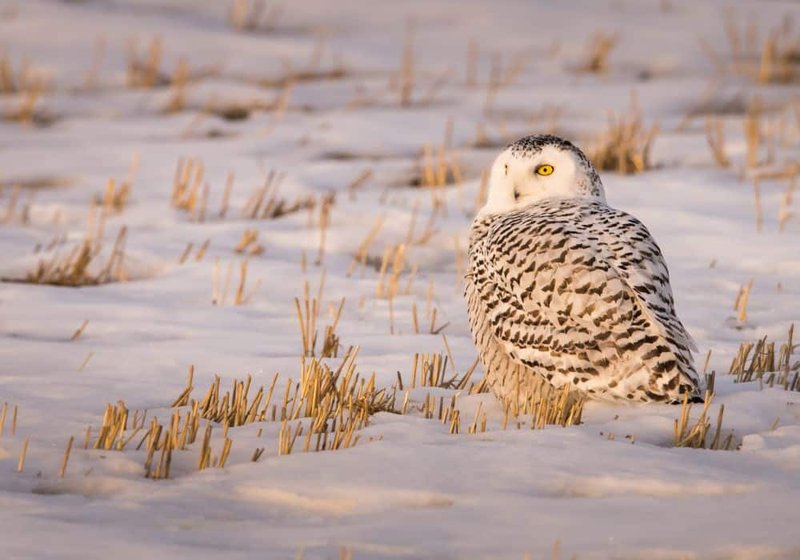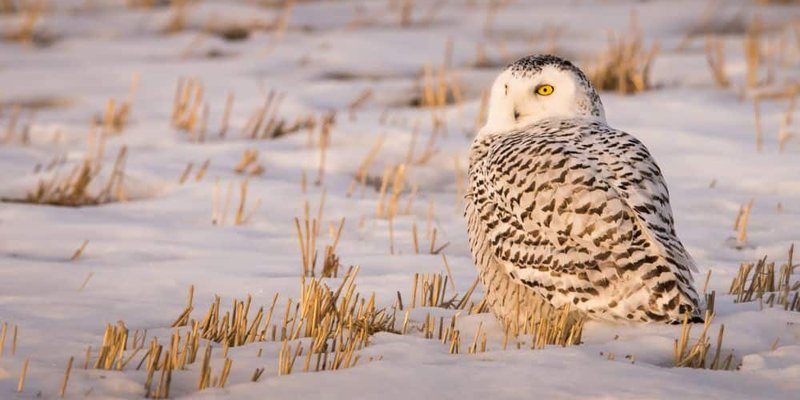
For many cultures, animals like the snowy owl act as messengers, bridging the gap between the mundane and the mystical. They often embody qualities that humans aspire to—like strength or wisdom. Just like how a lighthouse guides ships safely to shore, snowy owls guide us into the depths of human understanding and adventure. So, grab a warm drink, and let’s explore the enchanting stories and beliefs associated with these majestic birds.
Snowy Owls in Native American Traditions
Many Native American tribes share a deep connection with nature and its creatures, and the snowy owl is often woven into their stories and beliefs. For the Inuit people, the snowy owl is not just a bird; it’s considered a powerful spirit. They believe that snowy owls serve as protectors of the Arctic, embodying a strong sense of vigilance and guardianship. The Inuit have many legends about snowy owls, often portraying them as wise guides who can help lost souls find their way.
In some tribes, the snowy owl is seen as a harbinger of change. When these owls are spotted, it’s often interpreted as a sign that a significant life event or transformation is on the horizon. Given their striking appearance and elusive nature, you might say they hold a mysterious charm that captivates both the young and old alike. These beliefs create a rich tapestry of stories that are passed down through generations, anchoring the snowy owl firmly in the heart of Native American culture.
Symbolism of the Snowy Owl in European Folklore
Across the Atlantic, snowy owls have made their mark in European folklore as well. In ancient Greek mythology, the owl was associated with Athena, the goddess of wisdom. While it’s more commonly recognized as the barn owl, the snowy owl also embodies the qualities of intellect and insight in various European tales. People believed that spotting an owl meant that wisdom and knowledge were within reach, almost like a gentle nudge from the universe to pay attention.
Interestingly, the snowy owl has also been linked to omens in European cultures. For example, in some traditions, seeing a snowy owl was thought to foreshadow approaching death or significant changes. This duality—being both a symbol of wisdom and a harbinger of change—adds layers to the snowy owl’s role in folklore. It showcases how animals can embody various meanings depending on the context and cultural background.
Snowy Owls in Modern Literature and Media
Fast forward to the present day, and snowy owls continue to enchant us through literature and media. One of the most famous examples is Hedwig, Harry Potter’s loyal snowy owl. In J.K. Rowling’s magical universe, Hedwig isn’t just a pet; she represents loyalty, companionship, and the connection between the muggle world and the magical realm. You can see how a character like Hedwig can inspire young readers to look at snowy owls through a lens of enchantment and friendship.
Moreover, snowy owls appear in various folktales and children’s books, often characterized as wise and helpful figures. These portrayals help to instill a sense of wonder about nature in young minds. When kids read about these beautiful birds, they’re not just learning; they’re also developing a bond with wildlife. Snowy owls become storytellers in their own right, sparking curiosity about the natural world and encouraging a deeper appreciation for the creatures that share our planet.
Snowy Owls and Environmental Awareness
As the snowy owl’s popularity grows, so does awareness of environmental issues affecting these magnificent creatures. Stories about snowy owls create a platform for discussing climate change, habitat loss, and conservation. For instance, the snowy owl’s habitat in the Arctic is being threatened by rising temperatures and melting ice. By sharing tales that highlight the snowy owl’s significance, we can raise awareness about these pressing issues.
Imagine a classroom where kids learn about snowy owls and their habitats, igniting conversations about how to protect the natural world. These discussions not only educate but also empower future generations to take action. In a way, snowy owls become symbols of hope and advocacy, urging us to step up for the environment while connecting deeply with the narratives held within their majestic wings.
The Snowy Owl’s Role in Cultural Art
Art often reflects the intricate relationship between humans and nature. Snowy owls appear in various artistic expressions, from paintings to sculptures. These artistic portrayals often highlight their beauty and grace, capturing the imagination of artists and audiences alike. Just consider how a painter might use the snowy owl to express themes of wisdom and solitude in a stunning landscape.
In many cultures, snowy owls have also inspired traditional crafts. In some Indigenous communities, artisans create intricate carvings or beadwork that feature snowy owls, preserving their cultural heritage while celebrating the beauty of these birds. Through art, the snowy owl transcends mere existence, becoming a canvas for cultural expression and connection.
The snowy owl’s role in local cultures and folklore is truly remarkable, illustrating the profound connections humans share with nature. From being a powerful spirit guide in Native American traditions to a symbol of wisdom in European folklore, these birds have earned their place in our hearts and stories. Whether they appear in modern literature or inspire environmental activism, snowy owls remind us of the beauty and magic of the world around us.
As we continue to explore their cultural significance, we also uncover our responsibility to protect them and their habitats. After all, every snowy owl is not just a bird in the sky; they’re a vital part of our global story. Next time you see one, take a moment to appreciate the rich traditions and stories woven around this magnificent creature. Who knows what wisdom they might impart if only we take the time to listen?

